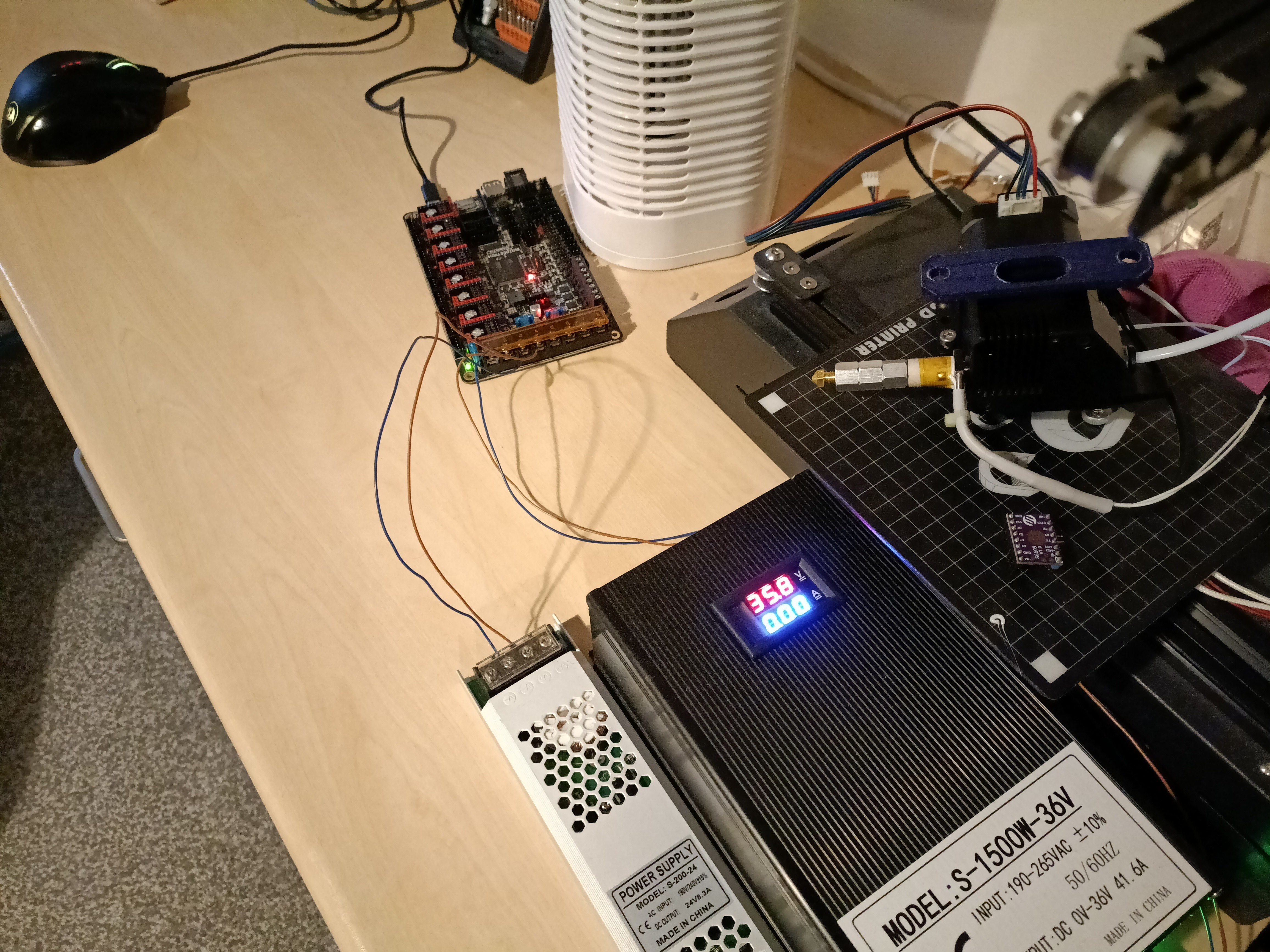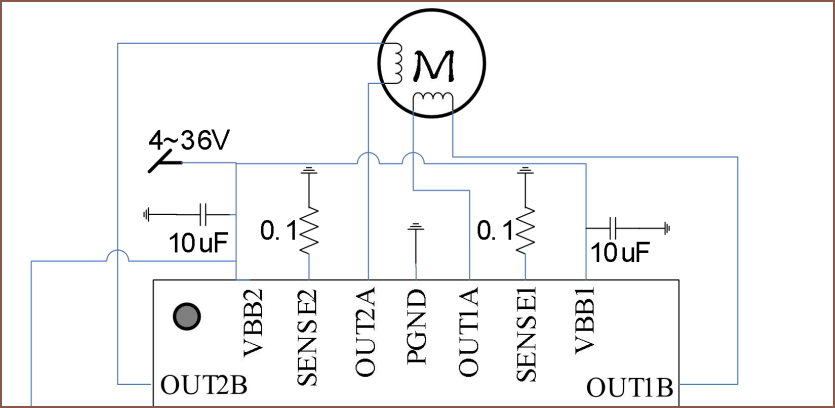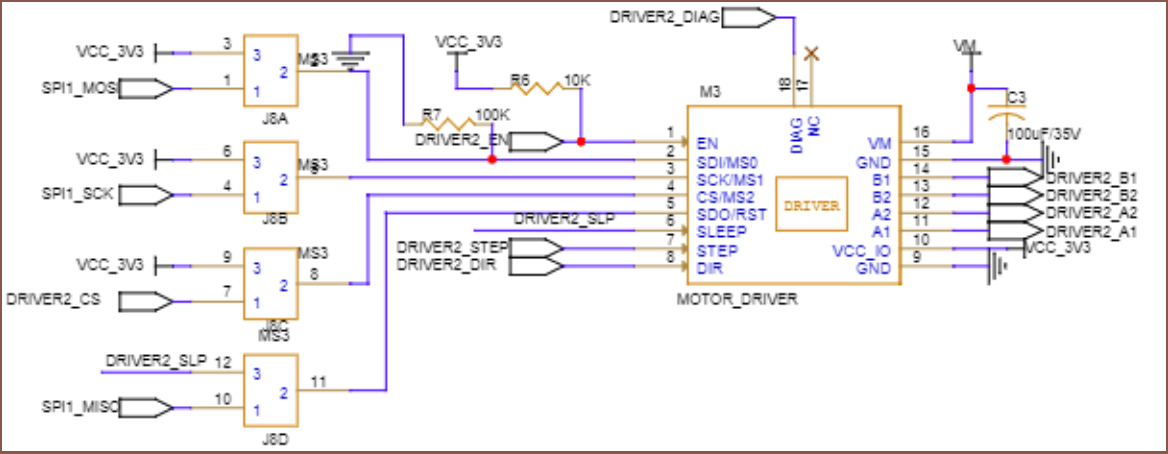
So I connected power and nothing broke so that was a good sign. Thus, I connected the extruder wires and heated up the nozzle. As you can see by the title of this log, the extruder motor didin't turn when I commanded a retraction.
So I got out a multimeter and swapped the wires around so that it matched up with this diagram in the S6609 datasheet:

Still nothing. Oh and while I'm on the subject of the datasheet, it's specified that a 50V capacitor is recommended so I don't really know why FysetC is using 35V in their schematic.

Then I found out from here that Marlin has the first extruder on Motor4 by defaut.
Good news: Something happens when I extruder / retract now. Bad news: The motor sounds the same as when the Z axis crashes into the bed or something. Perhaps I've got the polarity on one of the coils backwards so I'll try that now. Also, I'm testing on 24V first and then moving to 36V.
[12:26] Swapping the wires only made the chatter sound different.
I looked in the schematic and found out that BTT has addressed the issue caused by some stepper drivers when their Rx and CK pins are shorted together.

As you might be able to see (I know it's low res), the connection between pin 6 and 7 is now the 4th jumper pin. Thus, I tried UART mode to see if I could get a connection to the S6609 without cutting off the CK pin, and it worked!v Excellent stuff. That's 32 pins I no longer have to worry about snipping.
[14:52] Thank you Me In The Past for taking a picture of the electronics in the DP2. Got out a new cable, matched the colours exactly to the DP2 one and now I've got a slippery silent stepper!

As you might also notice, I'm using one of the heatsinks to hold in the thermistor so that I can get actual temperature values instead of "almost too hot to touch but actually no it's fine" claims. Ambient is 24C and before I got the stepper working, the highest I saw was 35C on the readout.
 kelvinA
kelvinA
Discussions
Become a Hackaday.io Member
Create an account to leave a comment. Already have an account? Log In.
Spec-wise, it's necessary for the charge pump to be able to handle the motor voltage. You really want it to be a bit over, as lifespan is shortened if you operate things near their rated peak. A 35V cap was probable selected thinking that the vast majority of people will only ever run 24V. I'd be cautious of running it at 36V with that cap though.
Are you sure? yes | no
Strange choice though considering 50V caps are really cheap and it's being advertised as 36V compatible. I do wonder if I should solder on new caps or run at 34.9V, with the latter probably being easier. MLCC caps are allegedly able to withstand higher voltages than electrolytic capacitors and thus don't need to be de-rated.
Are you sure? yes | no
If I were using name-brand, trusted 35V caps I would gladly use them at 36 for testing. I'd never ship a production board with that. If they're caps of unknown origin I'd be a lot more careful. SMD caps I've never seen fail in a dangerous way, though. If it were big electrolytic caps I'd be more worried as those literally explode when they fail (sometimes).
Are you sure? yes | no